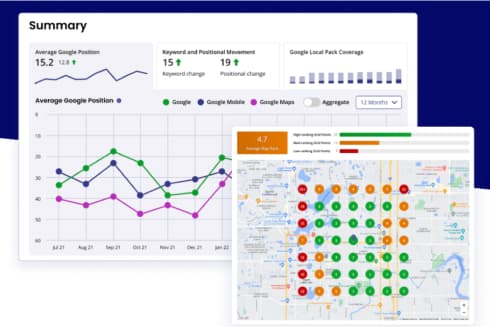The Importance of a Quality Review
Reviews have become an essential tool in the digital age, influencing the purchasing decisions of millions of people. Whether we are choosing a restaurant, purchasing a new gadget or selecting a holiday destination, the opinions of other consumers play a crucial role in our decision-making. A quality review not only offers an informed opinion, but also provides specific details that can help others make better decisions.
For a review to be truly effective, it must be honest, detailed and well-structured. It is important to highlight both the positive and negative aspects of the product or service, offering a balanced and objective view. Additionally, using concrete examples and clear descriptions can help readers better understand your experience.
In this article, we’ll explore the key elements that make up an effective review and how you can improve your skills to write reviews that really make a difference. From structure and tone to the specific details you should include, we’ll guide you step-by-step so you can become an expert at writing quality reviews.
How to Make a Quality Review
1. Be very clear about the definition of a review
Before you begin writing, it is essential that you fully understand what a review is. A review is a critical and objective analysis of a product, service, literary work, film, etc., providing detailed information and an informed opinion based on personal experience. Unlike a simple comment, a review should offer a complete evaluation, highlighting both positive and negative aspects, and should be aimed at helping others make informed decisions.
Understanding this definition will help you focus on the key elements of a quality review: objectivity, honesty, detail, and usefulness to the reader. A well-written review not only informs, but also provides clear and useful guidance based on real-life experiences.
It is also important to recognise that a review should not be a mere description of the product or service, but rather an in-depth analysis that considers different perspectives and situations. This means going beyond the superficial and offering a complete and balanced assessment.
2. Learn to cut out what really matters
One of the challenges of writing a review is knowing what information to include and what to leave out. It’s essential that you learn to focus on the aspects that really matter to your readers. Avoid rambling or including irrelevant details that can distract from the main purpose of your review.
To achieve this, consider the following points:
- Identify your target audience: Think about who will be reading your review and what kind of information will be most useful to them. For example, if you are reviewing a tech gadget, readers are likely to be interested in functionality, performance, and value for money rather than the history of the manufacturer.
- Prioritize key points: Determine what are the most important aspects of the product or service you are reviewing. These can include design, usability, quality, value, and any unique features. Organize your review around these key points to keep it focused and relevant.
- Be concise and direct: Use clear language and avoid unnecessary descriptions. Each sentence should add value to your review. If a detail does not contribute to the understanding or evaluation of the product, it is best to omit it.
- Include concrete examples: Instead of generalizing, use specific examples that illustrate your points. For example, instead of saying “customer service is good,” you could say “customer service responded to my queries in less than 24 hours and resolved my issue efficiently.”
- Avoid repetition: Make sure you don’t repeat the same information multiple times. Not only does this make the review longer, but it can also bore readers. Proofread your text to remove redundancies.
Learning to cut back on what really matters will allow you to create a more effective and enjoyable review. By focusing on key points and keeping the information relevant, your readers will be able to quickly get the information they need to make an informed decision.
3. Present the work analyzed
Before you dive into the details of your review, it is essential that you clearly present the work or product you are reviewing. This sets the context for your readers and gives them a basic understanding of what you are reviewing. The presentation should include relevant and basic information that puts the work in its proper context.
To achieve this, follow these points:
- Title and Author or Brand: Start with the title of the work or the name of the product, as well as the author, creator, or brand. For example, “Today I’m reviewing the novel ‘One Hundred Years of Solitude’ by Gabriel García Márquez” or “I’m reviewing the Sony WH-1000XM4 headphones.”
- Genre and Category: Indicate the genre and category of the product or service. This can help readers better understand the context of your review. For example, “This is a magical realism book” or “These are high-end wireless headphones.”
- Short Summary: Provide a brief summary or description of the product or service. For a literary or film work, you can give a short synopsis without revealing major spoilers. For a product, describe its key features. For example, “The novel tells the story of the Buendía family over several generations in the fictional town of Macondo” or “These headphones feature active noise cancellation, a long-lasting battery, and high-quality sound.”
- Purpose and Use: Explain the primary purpose or use of the work or product. This helps readers understand what it is intended for and whether it meets their needs. For example, “This book is ideal for those who enjoy complex stories and deep characters” or “These headphones are perfect for those looking for an immersive listening experience in noisy environments.”
Clearly presenting the work being reviewed gives your readers a clear starting point and helps them follow your evaluation with a solid understanding of what you are reviewing. This well-structured introduction also adds professionalism and credibility to your review.
4. Make an initial overview
Before you dive into the specifics of your review, it’s helpful to provide your readers with an initial overview of the work or product. This overview acts as an introduction to your analysis, setting the stage for the points you’ll develop later in the review.
Start by describing your general impressions and the context in which you used or experienced the work. For example, if you’re reviewing a book, you might mention how it made you feel while reading it, the overall tone of the narrative, and any expectations you had before you began. For a product, you might talk about your first impressions upon unboxing it, the quality of the materials, and your initial experience using it.
It’s important to be honest and balanced in this section. Mention both the positive and negative aspects that you noticed right away. This initial balance will give your readers a clear idea of what to expect without going into technical details yet. For example, “From the beginning, the novel captivated me with its poetic language and fascinating characters, although some chapters were a bit confusing due to the time jumps.”
5. Make the description of the content
Once you’ve established an initial overview, it’s time to dive into the detailed description of the content of the work or product. This section is crucial as it provides your readers with a deep understanding of what you’re reviewing, allowing them to form an informed opinion based on your experience.
Start by outlining the main features of the work or product. If you’re reviewing a book, you can talk about the plot, characters, writing style, and main themes. For a product, describe its technical specifications, functionality, design, and any special features that set it apart. Be as specific as possible to provide a clear and complete picture.
For a literary or cinematic work, you can divide this section into subparts, such as:
- Plot: Summarize the main events of the story, without revealing major spoilers. Highlight key moments and how the narrative develops.
- Characters: Describe the main characters, their roles in the story, and how they develop throughout the work. Mention whether they are credible and whether their actions and motivations are well constructed.
- Writing Style: Comment on the author’s style, flow of narrative, use of language, and any notable literary techniques.
- Themes and Messages: Analyze the central themes of the work and the messages it attempts to convey. Reflect on the relevance and depth of these themes. Noteworthy literary uniqueness.
For a product, you can structure the content description like this:
- Design and construction: Talk about the quality of the materials, the aesthetics of the product and its durability. Mention whether it is ergonomic and easy to handle.
- Features and Functionalities: Details the main functions of the product, how they are used, and whether they deliver as promised. Includes information on their performance and efficiency.
- User experience: Describe your experience using the product. Mention any difficulties you encountered, as well as aspects that you found particularly helpful or enjoyable.
- Comparisons: If relevant, compare these features to other similar products on the market, highlighting differences and similarities.
When describing the content, be sure to be objective and provide accurate and useful information. Include concrete examples to illustrate your points and avoid generalizations. This section should give your readers a detailed and balanced overview that allows them to fully understand the product or work you are reviewing.
6. Identify the target audience
A crucial aspect of any review is identifying the intended audience for which the work or product is intended. Knowing and mentioning who will benefit the most from the product or enjoy the work the most provides valuable context for your readers and helps them determine whether the review is relevant to them.
To identify your target audience, consider the following aspects:
First, think about the demographics of the audience that might be interested. This includes age, gender, occupation, and general interests. For example, if you’re reviewing an epic fantasy book, your target audience is likely to be teenagers and young adults who enjoy fiction literature. On the other hand, if you’re reviewing an advanced technological device, tech enthusiasts and professionals looking for efficient tools may be the most interested audience.
Second, consider the level of experience or knowledge your audience needs to have to fully appreciate the work or use the product. If you’re reviewing a novel with a complex plot and sophisticated writing style, it may be better suited for readers with experience in literature. If it’s specialized software, be sure to mention whether it’s designed for beginners or advanced users.
Third, identify the specific needs or problems that the product or work seeks to satisfy. For example, a self-help book on time management may be ideal for busy professionals and students looking to improve their productivity. A specific kitchen appliance may appeal to people who enjoy home cooking and are looking to improve their culinary experience.
7. Discuss a little about the author
Including information about the author provides additional context that can enrich the understanding of the work or product you are reviewing. Providing a brief biography of the author helps your readers understand their perspective and possible influences. Mention relevant aspects such as their experience, other important works, and their particular style or approach. For example, if you are reviewing a novel, you might highlight the author’s literary career, awards, and impact on the genre.
In the case of a product, if the creator has a prominent reputation in the industry, this can add value to the review and provide a framework for evaluating the quality of the product. This additional information can help your readers better value the author’s work and contribution to the field.
8. Find the answer to some essential questions
To provide a comprehensive and useful review, it is essential to answer a few essential questions that help evaluate the work or product in a comprehensive manner. These questions provide a guide to address different aspects of your review and ensure that you cover all the important points.
First, consider what the main purpose of the work or product is. This will help you determine whether it meets your goals and expectations. For example, if you are reviewing a book, ask if it manages to convey its messages and themes effectively. If it is a product, assess whether it fulfills its main function and delivers the expected performance.
Next, think about what sets it apart from similar products? Identifying unique features or innovative aspects will allow you to highlight what makes the work or product special and how it compares to its competitors.
It’s also important to answer the question, “What are the problems or limitations?” Address any weaknesses or drawbacks you’ve found, providing concrete examples. This adds balance to your review and offers a realistic view.
Finally, ask yourself: Who will benefit most from this work or product? Identifying the target audience and their needs will allow you to contextualize the relevance and impact of the work or product on different groups of people.
Answering these essential questions will help you structure your review more comprehensively and provide your readers with an informed and useful evaluation.












